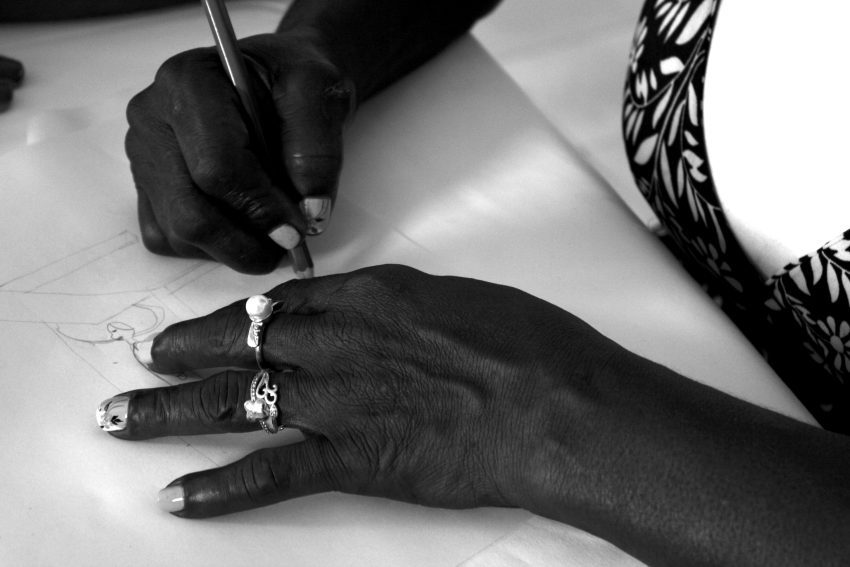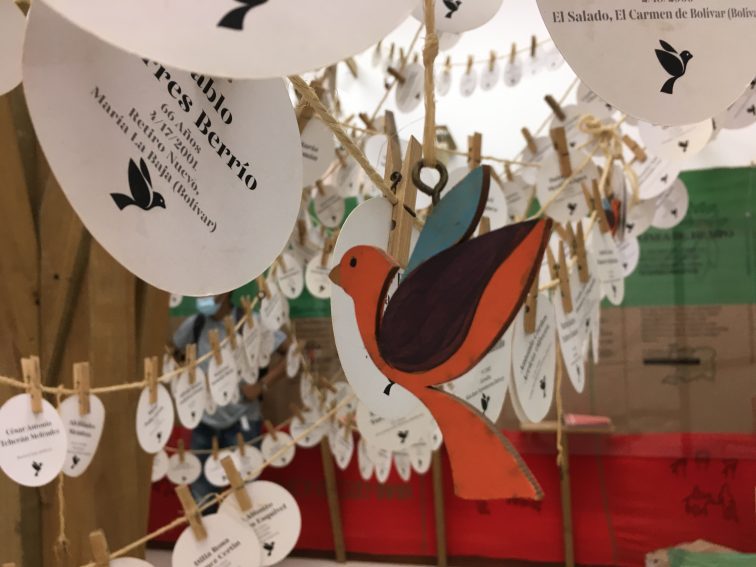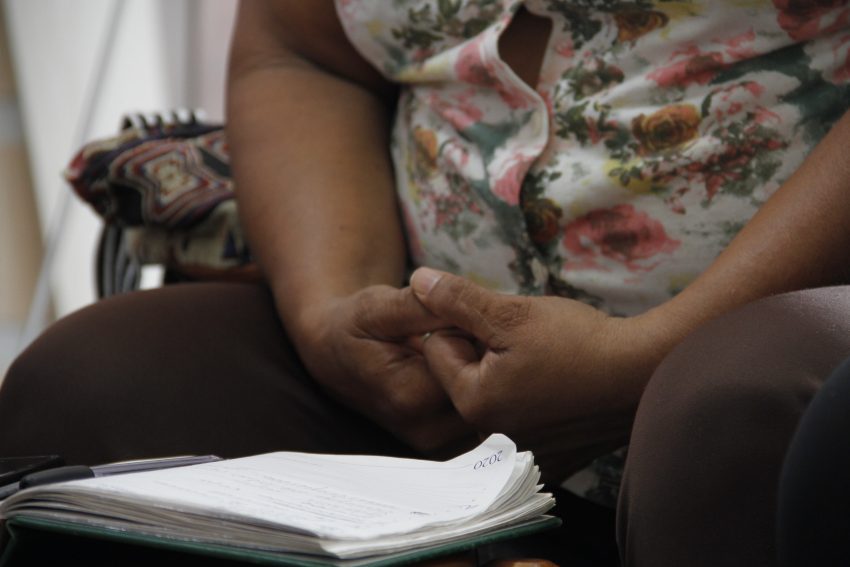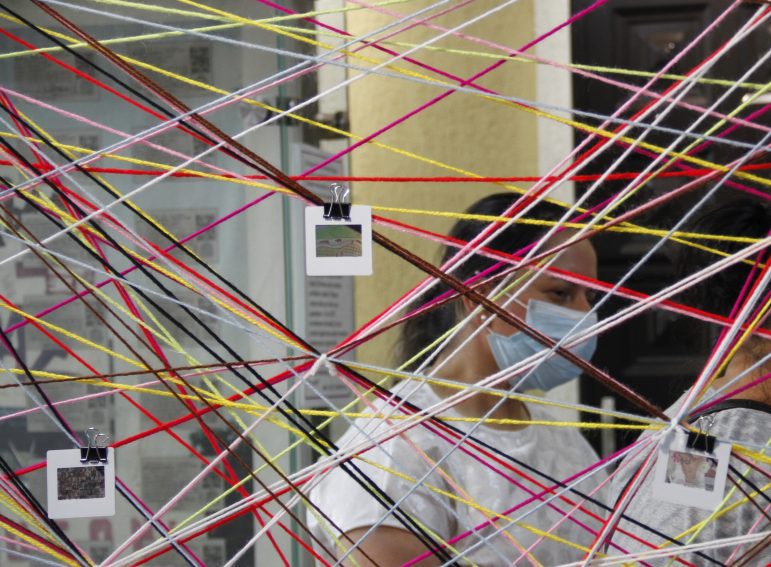What if we all went out together, in fear? Ethnographic notes on transnational angst.
Wednesday, June, 5th, 2024 News
By: Diana Ordóñez Castillo
Universidad de los Andes, Colombia

Photo: Diana Ordóñez Castillo. Workshop with women in Festival Audiovisual de Montes de María FAMMA, 2022.
I am on the bus from Rosario to Buenos Aires, Argentina, amid unstoppable rain, after a week of storms, hail, and windstorms associated with the La Niña phenomenon. In addition to the bad weather, Rosario has been shaken this week by a combination of concerns: an outbreak of dengue fever, the economic crisis, murders, the power of drug traffickers and the violence of the state’s response. The city is gripped by fear. Businesses are at half speed, families have decided not to send their children to school, gas stations are only open until 10 pm, and taxis have decided not to drive between 10 pm and 6 am. The streets emptied. The night, so characteristic of the dynamism of Argentines, young and old, became synonymous with danger.
Witnessing what is happening in Rosario reignited memories of a city paralyzed by fear, wielded to exert control. Two years ago, at the beginning of May, when paramilitary groups imposed an armed strike, a large part of the cities of the Colombian Caribbean was also plunged into a three-day curfew. After the relative calm that had prevailed since the signing of the agreement with the FARC-EP in 2016, the fact that illegal armed groups were able to control a quarter of the country at will came as a shock to the reality of Colombia. Friday night saw parks and streets deserted, vehicles set ablaze, and roads blocked at city edges, while shortages of food and fuel underscored the surface of the strike’s effects. Other effects, such as the transport of any kind of goods to the informal seaport departures, collusion with the legal armed forces and selective assassinations, made fewer headlines.

Photo: Diana Ordóñez Castillo. Temporary exhibition of Museo Itinerante de los Montes de María ‘El Mochuelo’, El Carmen de Bolívar, 2021.
I was in Argentina for the VII Congress of the Latin American Anthropological Association, “Anthropologies made in Latin America and the Caribbean in Urgent Contexts: Violence, Privileges and Inequalities,” in which I participated as a speaker in the Symposium on Museums and Anthropology and as a listener in the Symposium on Sites of Memory. This is an event that brings together research on subjects as diverse as the anthropology of music, sport, or motherhood. Even I have a place, although I am not an anthropologist, and my research is a multi-inter-trans-disciplinary patchwork.
As soon as Juan picks me up at the airport, he helps me with my suitcase, synchronises his Spanish rock Spotify and warns me: “Diani, I’m sure you know what’s happening in Rosario. It’s terrible. The media doesn’t stop talking about it. Didn’t the people at the Congress tell you?” What a cruel coincidence. The paper I am about to present is a reflection on fear and engaged research in community memory museums in Colombia, and just 15 minutes after landing, panic takes over the conversation. To lighten the mood, I tell him not to worry, that I am Colombian, that I have learned to be vigilant. As I tell him this, I feel somewhat annoyed that I have to plead that I am used to this uncertainty, that I am familiar with walking with precaution and the well-known uneasiness in my stomach.

Photo: William Medina. Workshop with women in Casa Museo de los Derechos Humanos de las Mujeres. Organización Femenina Popular. 2022.
In my doctoral research, I study two cases of community-based museums of memory of the armed conflict in Colombia as a methodological lens for understanding repertoires of social mobilisation. These are the Museo Itinerante de la Memoria y la Identidad de los Montes de María ‘El Mochuelo’ (Traveling Museum of Montes de María Memory and Identity) and the Casa Museo de la Memoria y los Derechos Humanos de las Mujeres (Museum House of Memory and Human Rights of Women), in Magdalena Medio. I am interested in the role of women in peacebuilding, the relationship of these museums with transitional justice, and the emotions that circulate in these processes. However, both my experience as a designer and the dynamics of the relationship I developed with the organisations in charge of the museums meant that my involvement was not just that of an external researcher, but that of an interested and active party. My work was no longer aimed solely at the production of academic knowledge, but I was committed to contributing to the achievement of the organisations’ goals, particularly with the organisation responsible for El Mochuelo, the Montes de María Línea 21 Communications Collective.
The study of emotions became part of my interest very early on when I approached museums from an academic point of view. Surprisingly, I wasn’t aware of my role in producing and materialising them in exhibitions when I worked as a designer. Upon distancing myself from my profession and adopting a ‘stranger’ perspective to scrutinize the seemingly neutral facade of museums, emotions surged forth. After that, however, the challenge was different. Emotions were everywhere: I felt the fear and the dismay, but also the optimism and the sense of moral responsibility of communities that had found in the museum a mechanism for their struggles; I saw the tension between joy, humour, compassion or friendship, and between the anger, dissatisfaction, and resentment that surrounded the processes that shaped the museums; or the astonishment, regret or remorse that arose in the dynamics of exchange with the visitors. In the end, I felt that the museum was a kind of iceberg that barely revealed a small fraction of the emotional vastness mobilized when the work was set in motion.
The enormous variety of emotions described to me, that the exhibition revealed, and that I experienced myself, brought the question of research methodology to the fore: how do I approach emotions to produce knowledge about them? My training is not in psychology or anthropology, and it seemed irresponsible to use interviews or surveys to ask about the emotions of others, especially in the context of violent conflict in Colombia. On the flip side, my background as an industrial and museum designer, coupled with my studies in the social sciences of science, development, memory, and peace, meant that my theoretical work was nourished by hands-on practice. Consequently, my approach remained consistent: to cultivate ideas through action, to ideate through emotion. Therefore, collaborative, participatory and engaged research emerged as the most authentic method to tackle my concerns. That’s why I became a workshop instructor, a designer, and part of the museum management teams.

Photo: William Medina. Museums for peace, temporary exhibition in Casa Museo de los Derechos Humanos de las Mujeres. Organización Femenina Popular. 2022.
A week before the congress in Rosario, hitmen working for drug traffickers murdered four people. Three drivers and a gas station worker, chosen at random, were executed at point-blank range. The killings were in response to the tougher crime and prison policies of the government and were linked to the violence unleashed by the rise of drug power along the Paraná River. The government’s response was a theatrical display of authority, as predictable as it was gross, including the vice president clad in a flamboyant pink suit participating in a security force dog training exercise.[1] The response of the people of Rosario, with good reason, was to isolate themselves, to fear, and to retreat into their homes. The cocktail of fear was forged: two opposing forces vying to demonstrate their capacity for violence, leaving the populace caught in the crossfire, both symbolic and material.
“The state never fails to disappoint,” scoffs one of the caretakers at the Museum of Memory in Rosario, as she recounts the measures the government has implemented these days: the militarization of streets, the encirclement of impoverished areas with roadblocks, and the arbitrary arrests of garbage collectors and anyone deviating from the standard light-eyed, blonde image left behind by European migration in this country. A taxi driver shared with us that his military passengers complained and joked about being taken only for photo ops. What awaited them? I wondered. Simultaneously, the father of one of the victims voiced his grievances to the government, stating that “they are handling things very poorly… when they started this “Bukele” system [in the prisons], we are the ones who pay the price.”[2] Despite his anguish, the man unveils the national security rhetoric used to camouflage abuses of power.
Whether in Rosario, Montes de María, or Magdalena Medio, fear always accompanies me in my work. It’s the fear instilled by both legal and illegal actors, the fear arising from direct violence, and the ever-present anxiety rooted in deep-seated forces of domination. It’s the fear felt by women hesitant to venture out alone at night, the apprehension of people avoiding the streets, and the unease I carry with me over thousands of kilometres. It’s Juan’s fear, my friends’ fear that keeps them from joining demonstrations. It’s the fear perpetuated by the fool, but also the fear sustained by the deliberate reproduction of the social hierarchy imposed on us. Pilar Calveiro has described this as the micro-politics of fear, those to promote self-preservation through suspicion and isolation from others.[3]
However, what I want to present at the Symposium is not how fear is reproduced, but how it could be transformed. What I want to discuss is what community museums have shown me about the possibility of transcending the individual dimension of emotions and thus counteracting isolation and concealment. Dora, one of the leaders of Casa de las Mujeres, summed it up: “If I am alone in my house in fear, and you are alone in your house in fear, why don’t we go out together, in fear?”
This sentence unravelled the knot of emotions I had encountered in these four years of research and showed me the entry point to untie one of them. It showed me the transformation of the effects of fear when it is embraced in solidarity. The experience that Dora told me about the moment when the women decided to come together, even though they were afraid, made it clear that the collectivization of their emotions is one of the conditions that support the mechanisms that these communities have deployed to resist violence. Taking to the streets together in fear was a challenge to the micro-politics of confinement, retraction, and paralysis.
Dora’s invitation also resonates within the – unfortunately no longer – distinct context of Argentina. The end of this journey coincides with the Day of Memory for Truth and Justice, observed annually on March 24th. This year, amidst an openly denialist government that has flirted with the notion of pardoning military figures accused of crimes against humanity, this commemoration serves as a stark reminder that the agreements forged, and rights attained, are enduring battles. In response, people have taken to the streets in protest. Once again, abuelas and mothers, now so old and in wheelchairs, took to the streets, certainly driven by the unease caused by the libertarian measures, the massive layoffs, and the dismantling of the state cutbacks.
It has been said that emotions are the link between agency and structure. A poster in the Plaza de Mayo in Buenos Aires that reads “El odio lo vence la bronca organizada” (Hate is defeated by organised rage) makes me think of this. It also reminds me of Catalina Pérez, one of the leaders of the peasant movement and land restitution in Montes de María, and her insistence on the need for organisation.
In the end, as much as this trip has been marked by angst, it has also been accompanied by fear in solidarity and the organised rage that takes place in the streets. Another country has allowed me to see the dimension of agency when emotions are collectivised and, in the long term, the capacity for collective action based on the community of affection.
[1] Tendencias en Argentina (@porqueTTarg) “Patricia Bullrich: por este video de la demostración de los perros de seguridad” Twitter, March 19, 2024, https://twitter.com/porqueTTarg/status/1770095850359853397
[2] “Papá de Bruno: “Empezaron con este sistema Bukele y pagamos los platos rotos nosotros”. Rosario 3, March 14 de 2024, https://www.rosario3.com/informaciongeneral/Papa-de-Bruno-Empezaron-con-este-sistema-Bukele-y-pagamos-los-platos-rotos-nosotros-20240314-0048.html
[3] Calveiro, Pilar. “Víctimas del miedo en la gubernamentalidad neoliberal”. Revista de Estudios Sociales 2017, núm. 59 (2017): 134–38. https://doi.org/10.7440/res59.2017.11.